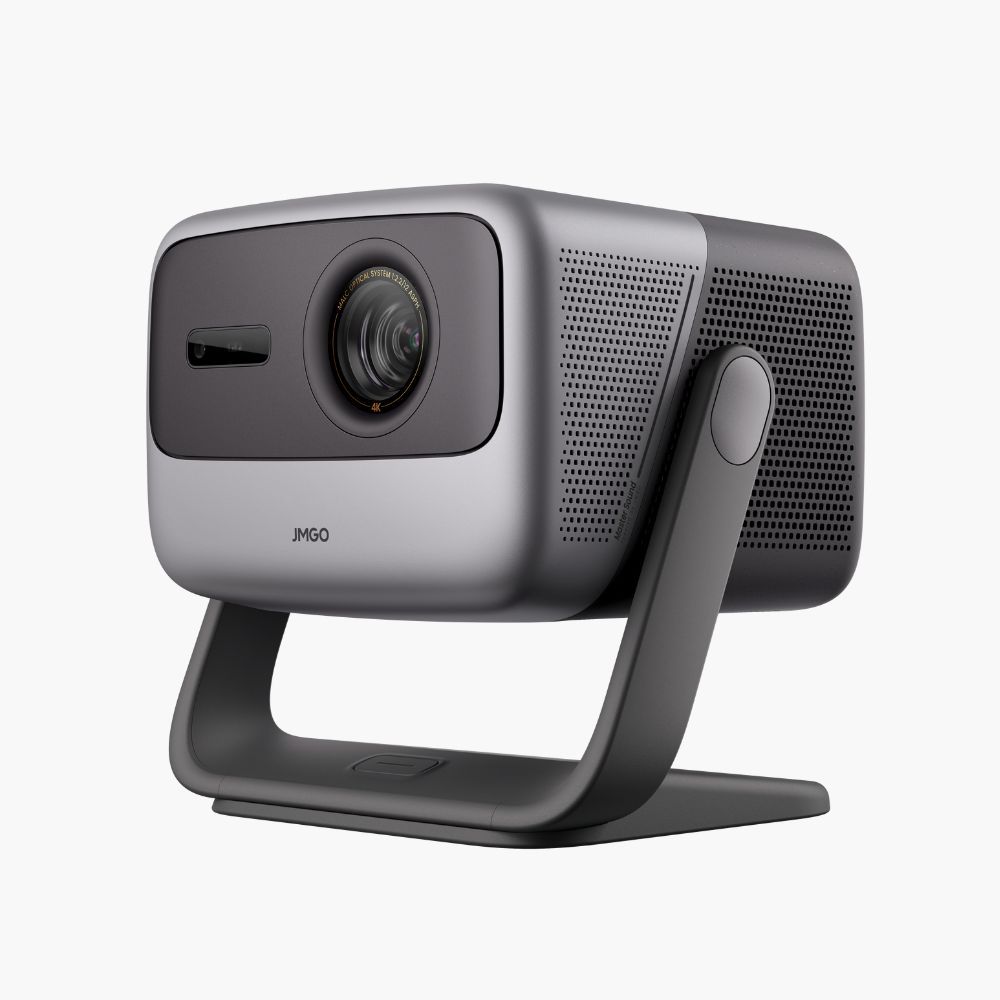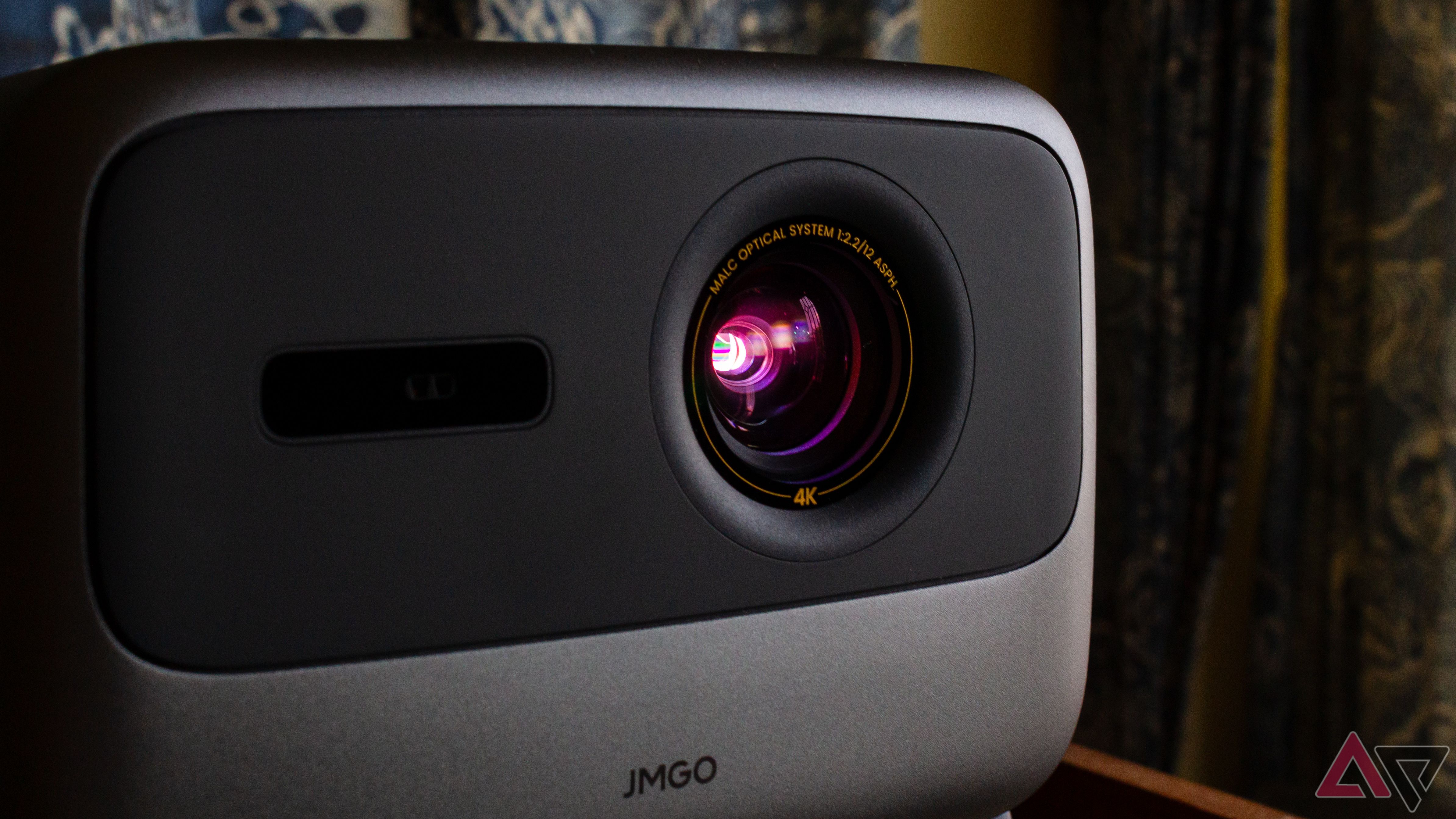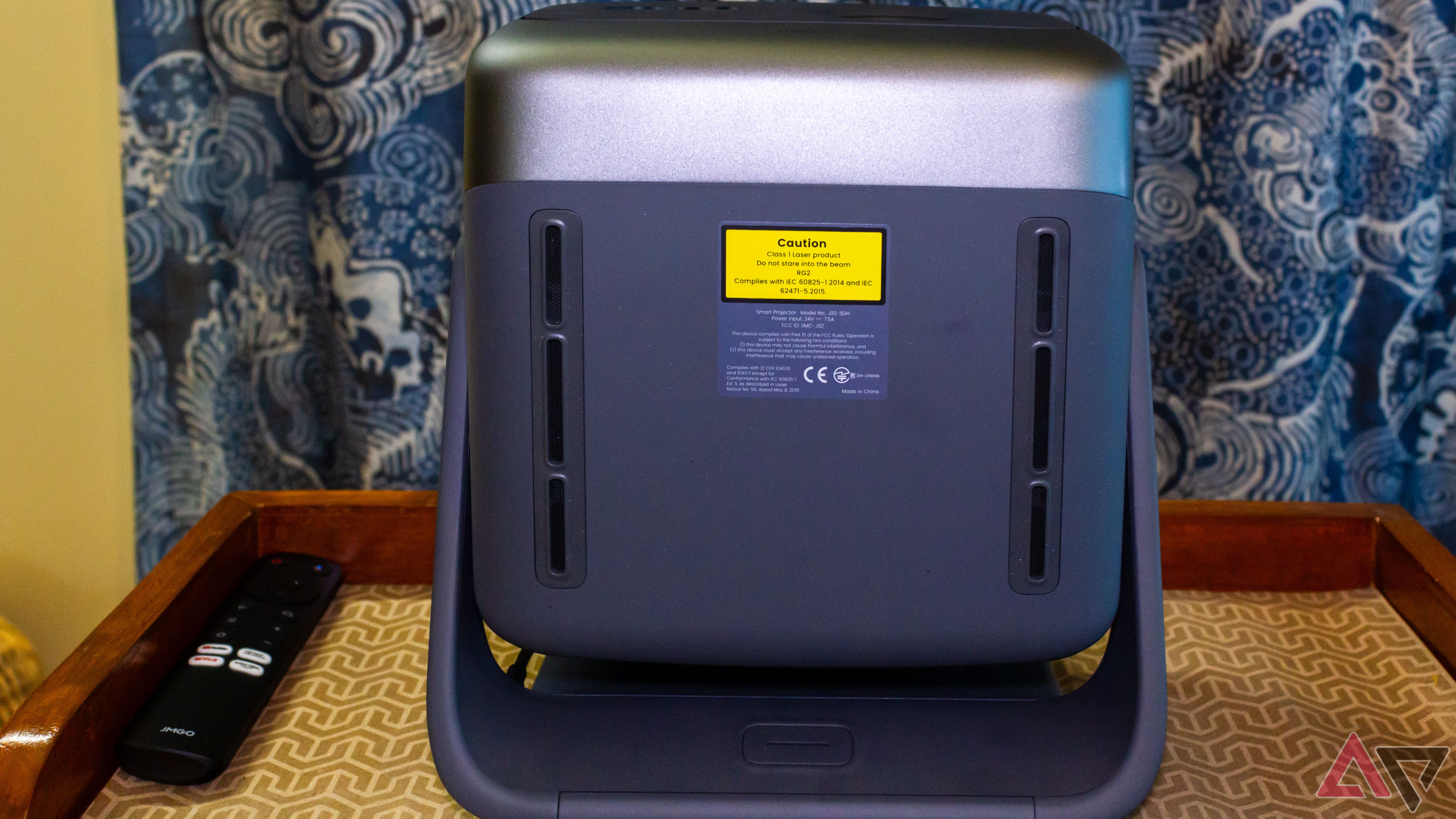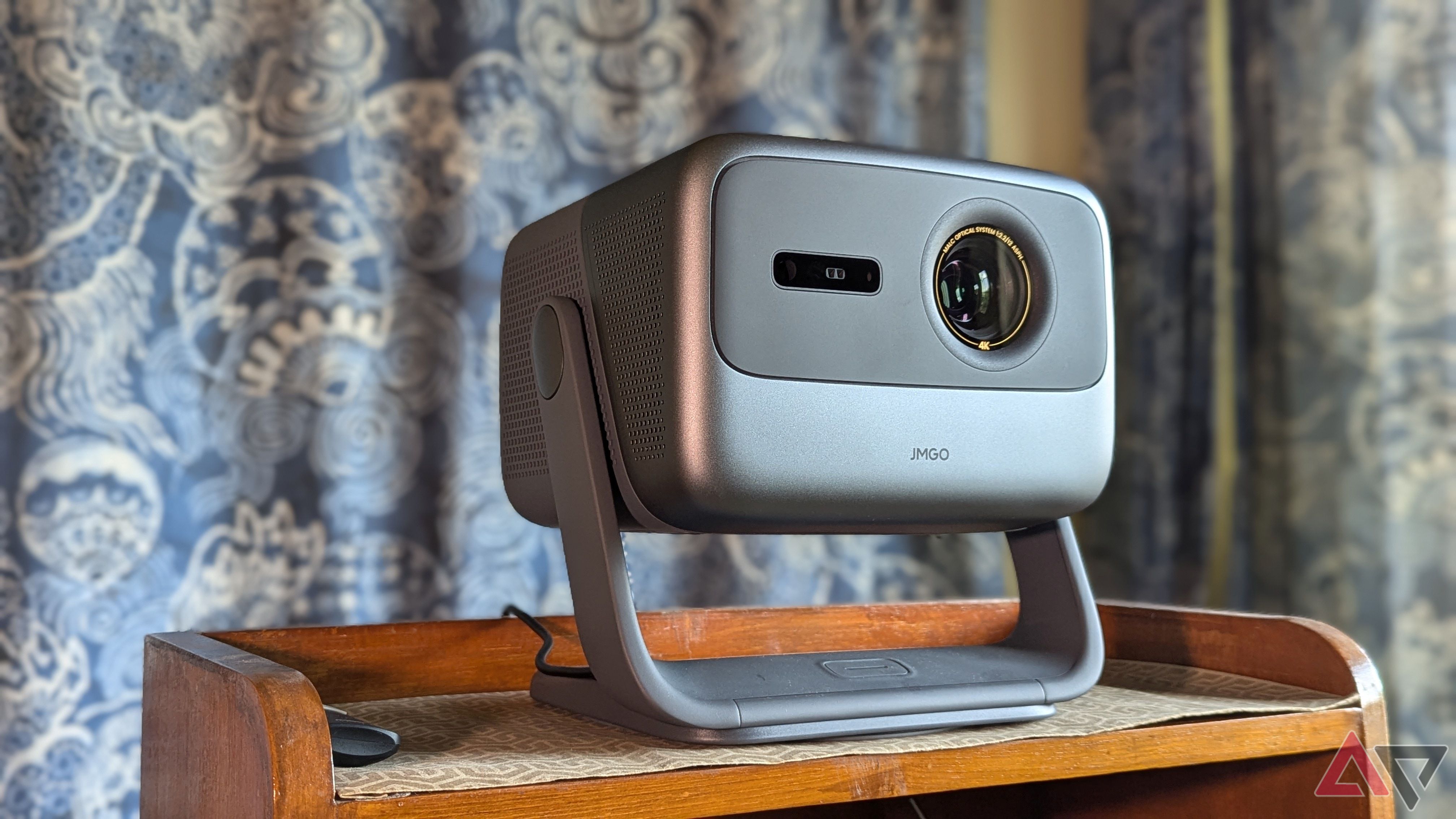Turning your home theater experience up to eleven after picking up an 80-inch smart OLED TV is challenging, but you’ll need to switch to a capable smart projector that offers a bigger screen, better value, and fewer trade-offs. When researching this, you’re bound to stumble across the hierarchy of projector lighting tech — regular bulbs, LEDs, and lasers. The latter is usually reserved for pro-grade use in movie theaters for the brilliant brightness, sharp contrast, and usually steep acquisition costs.
JMGO is among the few brands at IFA this year billing their latest crop of tri-laser home theater projectors running Android as viable alternatives to pro-tier solutions but for the price of a conventional LED-lit unit. So, we requested JMGO to send over an N1S Pro ahead of the grand reveal to determine if it is too good to be true.
Laser projectors are a step above LED-lit ones since they sustain output brightness over their service life, while LEDs and bulbs get dimmer as they age. Laser projectors are typically brighter and more power-efficient than compact LED models, making them even more portable, and that’s what JMGO is trying to do. However, at the price of a regular LED projector, innovation means nothing if the older tech performs better.

JMGO N1S Pro
With the N1S Pro, JMGO offers 4K resolution and a 1600:1 contrast ratio with 2,400 ANSI lumens peak brightness sustained for the 30,000 hours the lasers are rated to last. Sounds like a sweet deal for $1,700 if you’re looking for a step up from your LED projector.
- Companion app is convenient
- Automatic eye protection to prevent laser burn
- Native Netflix support
- Clunky firmware
- Chromatic aberration at high brightness
- No mute button
Price, availability, and specs
Third time lucky
JMGO’s N1S Pro was launched at IFA in Berlin this September. It is available for purchase on JMGO’s website and Amazon in the US for $1,999. The pricing positions it between the $1,150 N1 Pro with 1080p native resolution and the $2,500 N1 Ultra capable of 4K. The latter often drops to $1,500 new but runs Android TV 11 instead of Google TV OS on the new N1S Pro, which also does 4K. However, the Ultra has a higher peak brightness than the Pro.
The brand also offers accessory bundles, but you can pick up a compatible floor stand for $140, dust cover for $16, and rechargeable 3D glasses for $80.
What’s good about the JMGO N1S Pro?
Bright, sturdy, and beautiful
From the get-go, JMGO makes it apparent the N1S Pro is a premium product. You receive a Styrofoam suitcase with plastic fittings that I wouldn’t dare use as a carry case. The projector itself features a unique gimbal-like design that allows adjusting tilt and rotation at the base, so it’s easy to align your screen without physically moving the unit. This design has a lot more swivel that’s useful for tabletop use and ceiling mounts alike. And the compact form can be attributed to the external power brick, but I’m happy to report that the cord is long enough.
The N1S Pro’s remote control costs $40 to replace but is pretty standard fare. It has all the usual buttons that are raised or scooped for easy identification in the dark, and you get dedicated shortcuts for YouTube and Netflix. Speaking of it, this is among the first few projectors that put the sideloading days behind you for the simple joys of Netflix. A customizable button on the remote for launching another app would be nice, but the Bluetooth connection is reliable. I also found the large and visible power button on the base to be a valuable addition.
However, I was most skeptical about the JMGO N1S Pro’s triple laser-backlit picture quality. I’m surprised the results aren’t terrible in low light like you would have in your home theater. The light doesn’t need to work hard, and it keeps the cooling fan quiet, too. The contrast is impeccable and a shade better than LED-lit models, just like the presence of light shadows, but I could only tell after a side-by-side comparison. At full brightness, this projector can easily counteract indirect lighting, like ambient daylight and indoor illumination from cob lights in the ceiling.
However, your contrast and black levels will suffer from lights pointed at the projector or screen. The clarity-to-compactness ratio is par excellence and all the usual nice-to-haves you would expect for the price — automatic compensation for wall color, obstacle avoidance, automatic keystone, and automatic focus. MEMC is also present but switched off by default, even though it works reasonably well. The N1S Pro is also fine for gaming.
In the sound department, the N1S Pro has impressively loud and deep speakers. I felt the difference right from the Netflix loading chime to the movies I watched. Yes, it is challenging to extract any stereo separation from speakers so close together, but they balance clarity and loudness pretty well.
This projector also has features you’ll appreciate after owning it for a while — automatic image dimming with an on-screen warning so you don’t sear your retinas with the class 1 laser, and a dust removal mode that blasts the cooling fan at full speed to eliminate dust that might limit thermal performance.
What’s bad about the JMGO N1S Pro?
Undercooked firmware and limiting optics
Examples of black levels at maximum brightness with ambient light, soft focus, and chromatic aberration in the projection.
This bargain of a laser projector seems to make a few compromises to achieve the unbelievable price. First off, there’s no lens protection if it needs to be moved, and the holes provided for ceiling mounting seem barely adequate to support the projector’s weight. I really missed a mute button on the remote, but holding the volume button down for a couple of seconds worked fine. My only other quip with the remote is the absence of any customizable buttons or shortcuts for triggering keystone and autofocus.
I found this such a bother because the projector often failed to nail focus on the wall I used for a screen. It starts with the setup process, which doesn’t include an autofocus and keystone adjustment segment, but that was just the tip of the iceberg. The N1S’s focus was often soft, and the Wi-Fi connection failed, too. These issues were fixed by an OTA firmware update from version 1.1.31.5 to 1.1.31.8, but the top right corner of the screen always drooped lower than required after auto keystone.
The projector is clearly prepared for users pointing it at walls by adding a swiveling base and software features like wall color correction. Still, obstacle avoidance also fails comically in settings where others like the Xgimi Horizon Pro we reviewed had no issues. Manual override for everything saves the day here.
JMGO engineers told me only objects that protrude and are a different color than the screen are recognized as obstacles. Those are telltale signs of a machine vision-based system for focus, keystone, obstacle avoidance, and eye protection, instead of a conventional time-of-flight apparatus. It has advantages but seems rushed. Setting aside these limitations you’ll encounter only occasionally with a fixed install, it’s worth noting the otherwise flawless projected image exhibits red chromatic aberration at high brightness levels, typical of laser projectors.
Should you buy the JMGO N1S Pro?
A fine choice that doesn’t break the bank
You shouldn’t summarily dismiss JMGO’s attempt at making laser projectors more accessible because the image quality has its quirks, but you’ll get used to them. You’ll only have to endure setup-related issues once, making it great for fixed installations in the living room or shared office space. The N1S Pro also nails the longevity aspect because lasers shouldn’t get dimmer with age.
However, you’re better off spending that $1,800 elsewhere if you’re looking for a portable projector that delivers similar results. Sure, the JMGO N1S Pro is convenient to swivel and correct digitally once you’re in the right menus, but its dimensions aren’t meant for the rigors of touring.

JMGO N1S Pro
The N1S Pro isn’t the most well-rounded option on the market, but it packs innovative and promising display tech, and native Netflix support for LED projector money. If you can live with the fistful of shortcomings I mentioned, you’re better off picking this up, brand-new, for $1,700 instead of saving up for the Sonys of the world, and then supplying your own OS to top it all off.
Source link




